Season 2 Episode 11 TranscriptToday I'm going to teach you how to breathe with your rib cage. Here's what we're going to do:

And if they're not comfortable, if the shoulders can't be down, then grab yourself a belt, or maybe the belt off your robe, or that Ace bandage or yoga strap or something, and wrap that around your rib cage instead. If you've got a strap around your ribs, I want you to hold it snug against your ribs but not overly tight, not restrictive.

We tend to walk around with the rib cage thrust out forward, I talked about that in last week's episode about that “boobs out belly in” position. A yawn is one of the simplest ways to relax your rib cage back down into alignment, so that your ears, your shoulders, your ribs, and your hips are all stacked on top of each other, instead of that rib cage being thrust forward, of that line. So if you need to you on a couple of times, take a couple of big breaths and just let them out, and the ribs drop and the shoulders drop. 
So, when those ribs come back down and stop straining forward, the rib cage gets some flexibility, right there at your spine, which can feel really yummy, but it also might feel really weird in the beginning. So don't go too strong into this. We're not trying to force anything. We're just trying to take nice even breaths, feeling the rib cage, expand. This is a thoracic breath. 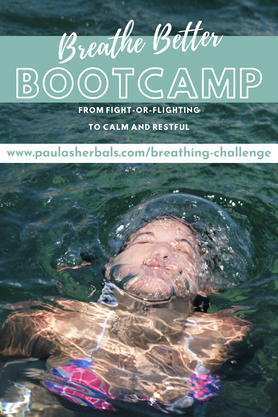 It's going to help take pressure out of your pelvic floor. It's going to help you take a nice deep breath, which leads into all the things you want breath work for: stress, anxiety, mindfulness, lifestyle. If you speak if you play an instrument, if you sing, if you have any manual hobbies, like gardening, like even exercising, being able to take a full breath, super helpful, I promise! This is going to be the breath that we are trying to create, this thoracic breathing, this movement in your rib cage, in the breathing challenge, it's going to start next week. So look out for that on my website, get on my email list if you're not so that you can join the challenge. It is free. It's just a five day challenge teeny tiny steps, couple of minutes every day to just watch a video and listen to me and then practice when you can. It's not going to be a gigantic investment of your time, but it is going to require some concentration and little practices throughout the day, so that at the end of the week, you are breathing better. All of this is going to be super helpful, super important, and it should feel really good. I hope to see you in the challenge! Sign Up Here Listen to the pod
0 Comments
Season 2 Episode 10 Transcript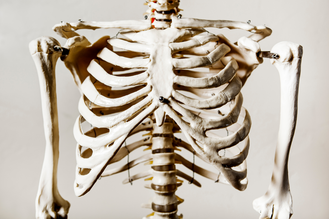 If you're not breathing well, then while you're maybe not getting lightheaded and actually threatening to fall over on us, you're also not optimizing how you're actually getting through your day. If you're breathing with your chest a lot, that can actually directly lead to anxiety. Your chest is made up of essentially the breast bone, and the collar bones, and the breastbone doesn't move. It doesn't flex. It's one large piece of bone, like a shield covering your ribs and also your heart. So in order to breathe with your chest rising and falling, what you're actually doing is arching your upper back. That arching movement puts pressure on spinal nerves that come out of the spine and go into the lungs. So when those nerves get triggered they can believe that they're not functioning the way that they're supposed to, in the ribs and in the lungs, and the feedback that they give your brain is that you can't breathe. So working your lungs, from your chest by arching your back, can cause anxiety or even a panic attack.  Most shallow breaths come from lifting your chest instead of breathing with the whole rest of your body. You've probably heard that before, about shallow breathing. But another way that you can trigger this is by driving when you're upset. A lot of people, myself included, have the tendency to push off of the steering wheel into your seat. I think it has something to do with when you're frustrated there's not much physical that you can do about it that is socially acceptable. But when you're driving and you're upset, you can push, you can engage all of those muscles, without it being at all socially unacceptable. And that can feel satisfying! But the pressure of your arms, pushing your upper back into the seat of your car, can have the exact same effect on those spinal nerves that go into the lungs, get too tense, and tell the brain, “I can't breathe”, and you can actually induce anxiety or even a panic attack while you're driving. Point is, please relax your grip and take a deep breath! Now we've also probably heard about belly breathing. It’s very common, especially a lot of yoga practices and stuff, and belly breathing is really nice because we tend to have really tight bellies. I'm going to talk about that in just a second. So doing a belly breath helps to sort of flip the pressure, where we're used to sucking in to releasing it and that can be very difficult, that can be a practice that a lot of people have to learn in the first place. So belly breathing can help take the pressure off the chest, it can help take the pressure off the upper back, and it can help take the pressure off of the abdominal cavity a bit. But if you're only belly breathing, then you're causing pressure in the pelvis. Because the belly moving in and out causes pressure fluctuations, up and down the chain, up and down the rest of your body. And so that pressure going into your pelvis, while it's a small amount, it builds up over the course of an entire day of belly breathing. So in order to not put excess pressure into the pelvis, we want to look at the alternative here to both belly and chest breathing, and that is called thoracic breathing 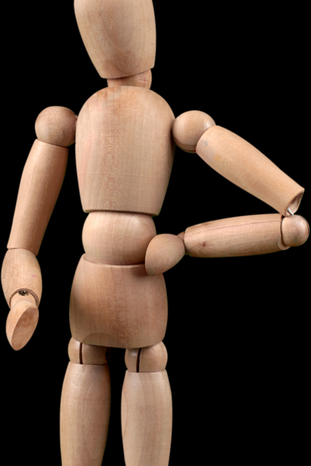 The thoracic part of your body is the upper part of your torso. It's where your ribs are, and where your ribs attached to your spine. That's why the upper part of your spine between your neck and your low back is called the thoracic spine. Inside your thoracic cavity is the lungs and the heart as well. Thoracic breathing means that you're using the rib cage- it’s also often called rib cage breathing- you're using the rib cage like fireplace bellows opening and closing opening and closing to move air. And the belly is a supplement to that, instead of the moving of the belly, or for that matter the moving of the chest, being what's causing your air to move. Remember you breathe by a set of vacuums. When you draw the diaphragm down, it creates a vacuum in your lungs which sucks air in and then you use muscles to squeeze that air back out again. Engaging the rib cage to open will also create that vacuum, and then the rib muscles themselves can close that rib cage down to squeeze the ribs, to squeeze the lungs, all the way around. However, we're not very good at thoracic breathing, we're not very good at using our rib cage like a fireplace bellows, and here's why  Basically, we are taught to walk around in the world “Boobs out bellies in.” Think about that overdramatic military posture with the chest thrown out. Think about those old cartoons- I can't think of what the name of the cartoon was but I can picture a guy standing on a beach. And he's got a belly. And this little stick figure of a woman walks past in a bikini, and he suddenly sucks his belly in, and his shoulders get broad and his posture is huge. And when she's walked past he lets his belly go again. And he returns to what we would now call a dad bod. That posture “belly in chest out” is, well, it's not a good posture! It's a fake good posture. By throwing the chest out, you're arching the upper back. Go back to the beginning of what I was just saying here- arching the upper back causes not only tension in the spine, in the ribs, in the neck, but also anxiety in the brain, because of the nerve signals that are getting stuck with that constant arching. By throwing the chest out we also then end up having to suck the belly in, to counterbalance that so you don't just fall over 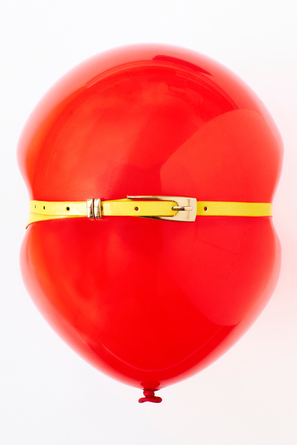 Right now, aesthetically, our culture thinks having a flat stomach, having a sucked in stomach, is appropriate. Functionally, that's not appropriate. Functionally your belly needs to move in and out, it needs to have enough space in it as a container to hold all of your internal organs, to allow for things like digestion and elimination- the size of which then is going to fluctuate throughout the day. And your belly is a supplement to your breathing, so it does need to move out and in. And most people that practice belly breathing, the first couple of times they try it (like for example a yoga class if you're sitting up and you try to belly breathe) people find they actually have to push their bellies out in order to expand that, because we have spent our lifetimes sucking in. When you suck in you're creating pressure, you're squeezing the balloon that is your abdominal cavity, and that pressure has to go somewhere- up or down. Once we start breathing with your rib cage, once we let the ribs expand and contract the way that they're supposed to, we can take a lot of pressure off of the belly-
And in relaxing the ribs and moving through the breath through the rib cage itself, we take pressure and work out of the belly. So, breathing well becomes a structural, a postural kind of thing that requires less tension, less concentration, less exertion than what we've taught ourselves to do over the course of our lifetimes. That “boobs out belly in” position is hard to maintain, and it's hard on our bodies! Coming back into all of that alignment so that the ribs can actually move- it’s a relaxed place, it's kind of nice to hang out there. So next week I’m going to teach you how to take a thoracic breath, how to feel your ribcage actually move when you breathe. And we’re going to play around with that in our next episode. Listen to this Episode Season 2 Episode 9 TranscriptI'm going to be running a free challenge soon, all about breathing better. So I put out a survey in preparation for that, asking people about their challenges around breathing, and breathing practices, and that type of stuff. One big answer that really stood out to me was that when asked the question, “What could you use better breathing for”, 95% of the people that responded to my survey answered, “stress, anxiety and mindfulness”. 95% is a lot. That's huge. And that is definitely something I can work with here. Now, to that one person who responded that they didn't need that- Congratulations! Please share your secret. To the rest of us, we've all heard about breathing techniques, we've all heard about doing breathing practices, and we know that they are related to stress and anxiety and mindfulness improvements. There's lots behind this- lots of research, lots of resources. I will link to a few of them in the show's transcript. I have some colleagues that have some really nice resources, really nice programs that you can try. I also have some other resources in general that I can share. I'm not going to get into all that right now. What I am going to get into here is the bottom line, which is that breathing helps everything.  Yes, it helps stress. A few episodes ago we talked about the Vagus nerve, and the parasympathetic (or the rest and digest system) and how that directly opposes the fight or flight system. Breathing absolutely helps you get into that rest and digest place. You can also use breathing, to help control things in your body. When you're exercising, when you're moving heavy objects- whenever you're using muscles, you can use a breath to help control all of that as well, for fuel, for power, all of it. But what does this have to do with your pelvic floor? Well, think of your body as two separate sections- there's your your midsection, your torso- everything from your neck to your pelvis; and there's your limbs. Ignore your limbs ignore arms and legs for a second. In that torso, you have essentially three cavities, and they act like individual balloons. You have one in your chest. It's called the thoracic cavity. You have one in your belly, called the abdominal cavity, and you've got one in the pelvic bowl called, funnily enough, the pelvic cavity. Each of these cavities makes and takes pressures from the rest of your body. So when you're breathing well, in that thoracic cavity, (which, spoiler alert, is where your lungs reside) It helps take the pressures, off of the abdominal and then the pelvic cavities. Often, we're not breathing, with our rib cage with our thoracic cavity, however, And so, that balloon isn't functioning. The belly cavity, that abdominal space, ends up doing most of the work of the breathing, and that is putting excess and unnecessary pressure into the pelvis. This is quite frequently one of the foundations of pelvic floor dysfunction. And it simply goes back to, how do we breathe with our ribcage the way that the ribcage was designed. Now, that “how to”? I’m going to explain that in next week’s episode. But today I just wanted to point out all of the layers here. There's layers in your body to help move things like breath around. And when used appropriately, everything works better. But then the breath itself has so many layers of help for the rest of you. Yes that breath helps with stress, yes that breath can help with physically moving around.  But if you do anything like sing, or do a podcast, or any kind of public speaking, or presenting on a stage or in front of the zoom screen, if you play a musical instrument, if you have a manual hobby, like gardening or anything that requires some exertion a little bit more than knitting (both gardening and knitting, our hobbies of mine, I'm not knocking that!) but the manual exertion type hobbies- the breath is going to be something that is very important for your stamina, for your endurance, for your longevity in those as well. So next week we’re going to get into a little bit more about how to breathe better. For today, I want you to just think about where does your breathing actually happen. Season 2 Episode 8 Transcript I wanted to talk about what it really means to have a holistic perspective, not only in terms of the pelvic floor that I focus on so much, but in that whole body, inside and out, top and bottom side to side, front and back setup that I am so passionately interested in, as well. The best way I can describe it is that your body is a system of levers and pulleys- your bones and your joints- and they are covered with rubber bands- muscles. So, any misalignments in your bones, any stuckness in your joints, and/or any tightness in your muscles, affects everything else.
The point is, everything is connected, and I don't mean that in any wishy washy kind of metaphor, it's literally the case that the foot bone is connected to the head bone.  So whenever you've got aches and pains, so much more than just that part that's having the ache and the pain is affected. And chances are that where you're feeling pain is just where it's landed, and not actually where the problem is. This idea of muscles as rubber bands is a good one. Because there's all sorts of sizes and tensions of rubber bands, think about ones that you can buy at an office supply store as compared to the ones that come wrapped around your vegetables. There's all kinds of different tensions different thicknesses different widths of rubber bands, and the exact same thing is true of the muscles in your body. There's all sorts of length and thicknesses and strengths and sizes of your body muscles. And they have to be balanced, to keep you vertical and ventilating. So think about those rubber bands for a second, think of an old rubber band, that's been wrapped around something that it's held together forever. And when you finally go to move it, that rubber band, just crumbles because it's been held tight, stretched out in that one position for so long. It's lost all function as a rubber band. Or have you ever used a rubber band in the freezer? I just pulled a bag of veggies, out of my freezer and I had wrapped a rubber band around the length of the veggie back to keep it closed. So when I took the rubber band off the whole bag, it stayed all stretched out, and only as it slowly thought, did it shrink back up again. because again it had been held in that one position for so long that it just held it shape afterwards Or, one more here- how about if you've ever gotten a hot meal at a grocery store, and it's gotten, you know they wrapped a rubber band around the meal container, and it got melty, it got sticky and gummy and lost its stretch. Muscles can do all of these things too. They can be so tight and so held in one place that they lose their stretch and they lose their function, or they just fall apart or, it takes them a long time to get back to the shape that they're supposed to be in. And we want to keep your muscles supple and moving- again, not just in and around that pelvic floor that I focus on, but in and around your whole body, since we know that everything is connected.  So try this. Make a fist. That clenched fist represents a tight muscle. I know there's a lot of muscles in your hand, there's a lot of muscles in your forearm that caused this. Just imagine the whole thing is one tight muscle. From here, how can you strengthen that muscle? Well, you can't. It's stuck there. You have to loosen your grip and pull your fingers back, let go, stop making the fist in order to be able to do anything to that muscle in the first place. So sometimes the answer to a tight muscle is stretching. But all the time, the answer to a tight muscle is to stop holding the tension in the first place.  And that tension is probably coming from somewhere else. So my holistic approach is to reposition the whole body from the foot to the forehead, so that all of the levers and pulleys and rubber bands, all of the tensions in your body, even out and go backto where they actually belong. This lengthens, and releases and loosens tight muscles so that we can then begin to strengthen them. And even then, it's not strength for strength sake that we're building. It’s strength to hold the good posture and the good form positions that prevent that unnecessary tightness and pain. So when I talk about a holistic perspective to your health, when I talk about a holistic full body approach to pelvic floor health, I'm not just giving that lip service. I'm really thinking about how all of the structures in your body interact with each other, and how we can make that work for us as we relieve not only your pelvic floor symptoms, but all kinds of other things, all kinds of other living pains that you've just been living with, in your daily life. And instead of just getting by, you can actually live comfortably, strong, graceful, and holistically. Season 2 Episode 7 Transcript
Herbal Stress Blends Herbal Stress Blends are first You can find these pre-made formulas in teas and liquid extracts like tinctures, and I mention them first because there's an excellent chance you already have one or more in your cupboard right now. In general, a stress relief formula is going to hit the major stress highlights of: • emotional upheaval • mental chaos • and body tension So they already have good herbal ingredients to start with! Go ahead and start here, especially if this is what you already have on hand. Make your tea, or take your tincture, or whatever the remedy is, whenever you need. Before, if you know you're heading into a stressful event; during, if you see it building; and after, to come down and recover well. And also, try your stress relief formula when you're NOT stressed, so you have a baseline to know what to expect! Pay attention to how you feel as you sip your tea, and also how the next 10-30 minutes feel, so you know what to expect. Chamomile Now let's talk about Chamomile If you’ve followed me for a while, or taken my Sitting Pretty free workshop for sitting pains, you’ve heard a bit about Chamomile! It’s common, yes, and it’s pretty gentle, but Chamomile is also impressive plant medicine. The part I want to talk about here is its incredible ability to relax skeletal muscles. What’s great about using Chamomile in a tea is that there’s no waiting around- the aromatic, volatile parts that do such a good job relaxing you evaporate quickly in hot water, so drink them up! You can also find lovely topical Chamomile products like lotions and liquid soaps. The company Weleda makes a really nice baby line with Chamomile in it, and since it’s gentle enough for a baby’s skin it’s also gentle enough for a face or neck massage, or a nice hot bath. This isn’t an ad, it just a suggestion [transcript note- this is an affiliate link], and you can find other nice topical products with Chamomile in them, besides the Weleda line, though I do suggest using organic ones especially since your face and neck skin is so delicate. One other Chamomile suggestion I have is a Chamomile Glycerite- it’s a remedy made from fresh flowers, full of their aromatic goodness, in sweet, gentle vegetable glycerin that you can take by mouth directly from the dropper or in another beverage. It's delicious! I’ve gotten mine through Herbiary- I’ll link them in the transcript. Calendula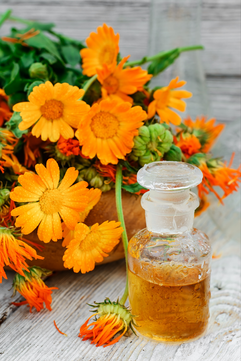 That Weleda baby line I mentioned also uses Calendula because of its ability to quickly and gently heal skin, like from diaper rash. Calendula also is a wonderful lymphatic- it helps move lymph fluid just below the skin. This is important because we have so much lymph coming from the face and sinuses, and what’s called “glymph” draining from the brain when we sleep, and it all has to exit through small channels in the neck that can get even more restricted from tension. A nice self-massage using some Calendula infused in almond or jojoba oil, or in a gentle body wash, can help all this drain out normal lymph plus the extra lymph that's created as the body tries to heal damage caused by the tension. In addition, any damage caused by inflammation, or for example forcing tight muscles to move like by chewing with tense jaw muscles, will be helped to heal by Calendula. Lavender Another lovely aromatic that can help with tension is Lavender. In addition to smelling wonderful, which is its own relaxing trigger for me, Lavender has a few specific actions of its own: 1. It’s cooling, reducing inflammation 2. It’s analgesic, meaning it can relieve the pain of tension, inflammation, and headaches 3. It helps heal by stimulating cell reproduction You can find Lavender in culinary items like teas and even cookies! It’s also very common in topical products, everything from lotions to linen sprays to shampoos. I do always suggest using organic products, to reduce the synthetic chemical load on your skin, and I always suggest NOT using essential oils. They are a precious resource, and I much prefer them in their already well-diluted state. One of my absolute favorites is the Lavender hydrosol that Barefoot Botanicals in Doylestown PA distills from their own plants in their homemade still. It’s water that’s super saturated with the Lavender essential oil, so it’s safe to spray on your skin, or even over the top of a beverage as a fancy finish to a drink! I’ll link this in the transcript too. Solomon's Seal This is a little less well-known herbal remedy- it’s not an everyday plant like Chamomile or Lavender, but boy oh boy is it helpful here. This is Solomon’s Seal- this is a root medicine that encourages our connective tissue to heal. Connective tissue damage is typically a long-lasting problem because it has so little blood flow- when you look at an anatomy picture of the muscular systems, the white tissue that connect muscles to each other and to bones is this connective tissue, and it’s white because there’s not much blood in it! Typically, you can find Solomon’s Seal in an infused oil, which is a nice topical remedy to massage into your neck and jaw, and you can also find it as a tincture. This is an alcohol-based herbal remedy that you can use directly on the skin, though it may stain the skin a bit, and/or you can take it by mouth also. I’ve gotten a really nice infused oil from Avena Botanicals in Maine, and my favorite tincture is from Angel Shockley in VA. She has agreed to let me mention her as a resource for her tinctures but she says, and I quote, “There's only one catch - I don't post tinctures for sale in my shop. Anyone wanting to get some would need to reach out to me.” So on Etsy you’ll look for VAHerbAngel, and I’ll link to her in the transcript as well. Then send her an Etsy message if this is something you wanted to experiment with. Her Solomon’s Seal tincture is so rich and well made, I swear it tastes like chocolate! I just take a couple drops by mouth almost every day- not very much, because it’s so concentrated and so precious. When I’m consistent with this, my neck and face feel so much better, even if I’m doing an extra lot of talking or computer work. Blue Vervain There’s one more herb here I want to mention, and it's Blue Vervain. It’s even less well known than Solomon’s Seal in terms of general herbal knowledge, but if you’re either in frequent and great discomfort, or getting into herbs and wanting to step outside your comfort zone a bit, let me introduce you to Blue Vervain. There are a number of plants that might be called Blue Vervain- I’m specifically talking about Verbena hastata. Blue Vervain is an intense bitter, that really shakes up the nervous system. The herbalist Matthew Wood describes it perfectly, so I want to read you the description from his book New World Plants: “It is suited to people who are very intense, even fanatical, laying impossible standards on themselves or others. They strain to live up to these impossible standards, or to impose them on others. Yet, they have not the strength to sustain this activity, so that they are too intense mentally and emotionally, but suffer from physical weakness.” He goes on to say, “The specific indication to look for is stiffness in the nape of the neck.” When Matthew Wood calls this a specific indication, that stiffness in the nape of the neck, a specific indication in the herbal world is a direct link. When you see this thing, think of this herb. In general, herbs aren't "for" our problems, but in specific, acute cases there are some very clear lines that we can draw between a problem and a solution, being a particular herb. In this case, Blue Vervain is the first thing to call upon for help when you've got stiffness at the nape of the neck. Another one of my teachers simply said, “It’s good for whiplash, and tall people.” Which, I guess I'm considered tall, I'm 5'9", so I do keep Blue Vervain. And when my neck, especially the back of my neck, is acting up and I lose range of motion, I turn to Blue Vervain. Bitters relax muscles, among other actions, and this deeply bitter plant has a specific affinity for relieving tension and heat at the base of the skull. It’s a serious bitter, though. In large or even medium doses it can be an emetic- that means it makes you throw up. I have a bottle from Barefoot Botanicals in Doylestown that is about 2 years old now. It lasts that long because I only take a few drops when I’m feeling stiff-necked, both literally and metaphorically. It does NOT taste good, I'll warn you of that again. But it is very strong medicine and you don't need a very high dose.  So there you have it- a couple of my favorite herbs, specifically about TMJ, tongue tie, and headaches. I really hope you find relief, both with the movement in the last episode and with the herbal ideas in this episode. And I'd love to chat with you more about this. Reach out on the socials or in email and let me know if any of these are help you! The transcript for this episode will be on the blog on Friday. Listen Here Holistic Lifestyling Podcast Season 2 Episode 3 Transcript Whether we’re talking about stress or any other body system that can use support, herbal remedies are an important part of a holistic approach to your wellness because how you treat your insides is just as important as how you treat your outsides. In the last episode, I talked about the external things you can do, the activities you can do with your body to influence and improve your stress responses. If you haven’t listened to this, I recommend you download it now and catch up! Today I’m going to talk about the internal things you can do to help manage your stress responses. My focus is on the herbs and the remedies that you can work with, but I do want to mention things like a good diet and drinking more water and taking your multivitamin can also all be parts of these more internal supports. I’m not a nutritionist and I don’t want to go there, so eat well and drink more and follow the good nutrition advice of the professionals! I am, however, an herbalist. Yes, I’m a movement coach and a pelvic floor specialist, and also an herbalist. If this is a surprise to you, then I suggest you check out my season 1 episode 8 where I introduce myself and explain why I’m not a guru! My very first podcast episode, labeled number 00, will also help you understand who I am and how you got here on a podcast about whole body wellness, inside and out. First Things First In my capacity as an herbalist, it’s so important to me to say first that plants weren’t invented for our things. Pharmaceuticals were, and they work well in that capacity. But plants are their own complex chemical beings, and it’s more useful to think of them as a friend group. Different people play different roles in your life, but these people also stand alone and have their own lives. Different plants can play different roles in your life, but they can have a very different relationship with another person at the exact same time. Plants don’t exist to solve our health problems. My classic example of this is coffee. You might drink a cup or 2 in the morning. Someone else might live on it, fueling their bleary eyed workday and demanding more of their body and the coffee bean than is reasonable or healthy. On the other hand, I am one of those people who can’t drink coffee at all- it gives me heart palpitations and makes me vibrate like I’m going to stick to the ceiling and I get nauseous right away. Same plant, different relationships with different people. The point is, there’s no “herbs for stress”. What there is, is a group of plants who interact with us and our nervous systems in different ways that end up helping us regulate, resist, and be more resilient to our internal and external sources of stress. When you find a “stress” blend in the tea section at the store or in a tincture bottle at a health food store, or if you sit down with a clinical herbalist who makes specific suggestions or even blends you up a personal formula, the individual herbs in that blend haven’t been randomly chosen- I hope!- simply because they’re “stress” herbs. 3 Categories of Stress Relief We’ve got 3 basic categories of herbal stress relief-
Let me give you the super short, mini overview: Nervines influence the nervous system.
They were given the name “Adaptogens” by the Russians in the 1950’s and 60’s while they were trying to figure out how to force more work from their workers in terrible conditions. There is some terrible research behind the knowledge we have now, and I believe we can best honor the people who suffered for these experiments by working with these plants in pursuit of recuperation and health, which honors their more traditional understanding, instead of using them to force long work days days and all nighters and those types of personal abuses that were desirable under communism, and are often sources of misplaced pride in today’s grind culture. Adaptogens all act differently- they fall on a spectrum between calming and stimulating, but all of them help improve energy levels. Also, which plants specifically fall under the heading Adaptogen is sometimes up for debate, but that ability to have personal and professional experience and discussions is one of the things I like best about herbalism! Adaptogens you may have heard of include
Tonics or Nutritives are herbs that blur the lines between food and medicine. These are plants that contain very high amounts of things like minerals and other micronutrients that help your body repair and restore itself long term. They are often worked with as teas that steep overnight so they get very strong and concentrated: Now What Nervines, Adaptogens, and Tonics- these are 3 groups of herbs that play different roles in helping us resist, recuperate from, and build resilience to our stressful lives. The point of giving you this overview is NOT to make you an expert after a few minutes of a podcast! Rather, I wanted to introduce you to the idea that plants have chemical complexities, almost personalities, and that our familiar, more medical approach of “take 2 and call me in the morning”, that idea that there’s a pill for your condition, doesn’t work with plants. This isn’t to overwhelm you, I’m not suggesting you now have to become knowledgeable about all the possible plants that might help you manage stress better. Instead, what I hope this does is give you an overview about why there are so many ingredients in stress blends, and also why your favorite blend might be different than someone else’s! Finding the herbs that work best with you can be like dating- you might just wade in and start sampling all of them, or you might work with an herbalist who matchmakes FOR you, simplifying and shortening the process! Where to StartIf you are listening to this and now wondering where to start, there’s a couple of simple things you can do first. These ideas are in increasing order of your own personal involvement:
Remedies And keep in mind, if you pick an herb to try out- or for that matter, an herbalist to work with- they may not be a good fit. That's perfectly fine. You know more about how they work now, plant or person, and you might be able to suggest them to a friend of yours sometime who they would fit better with. One final note is that I'm mostly talking about tea here because it’s super simple to put hot water on a teabag, and you can find them most anywhere. Tea is one of the easiest starting points to working with plants, but another pretty common remedy you’ll see on the shelves if you go to a fancier grocery store or an independent health food store or maybe an herbalist’s shop or stand at a farmer’s market, is a tincture. This is a more concentrated remedy than tea- usually it’s an alcohol-based extract of the plant. Think of putting vanilla beans in vodka to flavor it, but stronger and with the purpose of extracting the therapeutic benefits of the plants, not just flavor. It might not be alcohol, there are other options like glycerine or vinegar, but the point is these are remedies in little bottles with dropper tops that you take by the drop or the squirt, as compared to tea that you drink by the pint or the quart. You might take the tincture directly in your mouth, or you can add it to other drinks to dilute and disguise the flavor- the instructions will give you direction as to how and how much to take. Because they’re more work to make tinctures are more expensive than teas, but because they’re concentrated they’re also used in much smaller doses so they last longer, and because they're already liquid they’re much easier to work with than tea is. So if you’re feeling like tea is too much work, too many steps with water and containers and hot or whatever is getting in your way, you can venture into the apothecary section of your grocery store or farmer’s market and try tincture-based remedies instead! I’ve mentioned a lot of specifics today that I’ll link in the shownotes and the show transcript when it comes out later this week. I’m trying to give you a broad overview of how to start working with herbs that can help you manage stress on your own. If the idea of sitting down with an herbalist sounds more your speed, or you come to that decision later on, do a local search and see who might be practicing in your local area. If you come up empty then reach out to me and we’ll see if we can find you a good herbal fit.
Listen to Today's Episode Over the years, I'll bet you've developed what I call Living Pains. The sometimes small, sometimes big aches and pains that you've been living with, but are starting to really impact your life now. Are you tolerating any of these Living Pains right now?
 Avoiding and fending off Living Pains takes up a lot of time and energy, and you miss out on parts of life that you'd actually love to enjoy. Instead, you have Nearly-Living Experiences that don't quite compare. I think many of us are regularly having Nearly-Living Experiences, nearly living as fully as we can but not quite. We're ignoring these experiences in the face of our busy lives, letting them pass us by, and instead accepting Just Getting By (JGB) as good enough. Nearly-Living Experiences are the chances, opportunities, and openings for us to make the big and the small changes that would wildly improve our quality and appreciation of our lives- but the steps involved usually prove too much:
 It’s no wonder we can’t take advantage of our Nearly-Living Experiences, what with all the rest of Life™ going on, and that JGB is the habitual order of things. And it’s also no wonder that a LOT of people come to the realization that they MUST make some kind of change at a crisis point in their life, when JGB has stopped being a viable option. At that point, you realize that any amount of work required between step 1 and step 6 is reasonable, since you simply must get to step 6 to ever feel better. But this JGB habit, it’s not really a comfortable one, is it? It’s like the frog in the pot metaphor- if you put a frog in hot water, it’ll jump out. But if you put a frog in a pot of cold water then put it on low heat, the frog will sit there with its world getting gradually hotter, until it IS the soup. (I have no idea if this story is true. But it illustrates the point!) We tend to accept small injuries, small adaptations, small shifts in our patterns as just one more thing that we’re too overwhelmed to deal with. In the buffet of dumpster fires before us, what’s a sore ankle? Over time, though, that sore ankle causes a limp, that changes your gait and your hip function. This impacts your psoas, which tightens up and tilts your pelvis, impinging circulation in your abdomen. Slow, heavy, uncomfortable periods become the norm, and digestion stagnates too, leading to bloating and pain since lymph can’t drain away. Now your energy is low, because you’re not digesting well to support it, nor are you eating well because you feel like crap and that’s a hard place to make healthy choices from. While you’ve been focusing on the dumpster fires, your own building is burning. It turns out, you're your own firefighter in this situation. Nobody else can conquer your Living Pains, nobody else can help you move from Nearly Living and Just Getting By to living your fullest life. My work is dedicated to teaching you the what and the how so you can regain authority over your own self, and live that life you're missing out on. I wrote a blog series over the winter of 2019- 2020, about my perspective on herbalism as an herbalist, which was really a catalyst to me embracing my whole-body wellness beliefs and doing a deep dive into the pelvic floor work I shared throughout 2020. I want to share some of what I wrote back then with you- especially part 2, and that ending in part 3. Now, it’s time I updated my position. I’m not just an herbalist, I’m a whole-body wellness teacher. It took me a long time to really blend my 2 things- call them passions, call them skill sets, whatever. My whole life I’ve been interested in herbalism, plant medicine, and taking care of your own self. 15 years ago I took a job as a pilates teacher because I needed a change, and it sure changed everything! 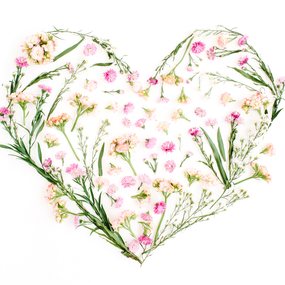 Movement- like pilates, pelvic floor support, foot mobility, and the myriad other physical-related conversations we've had online- is a major part of how I see and practice health. Our bodies are designed to move, a lot, and we're not taught how to do that. This is important to me. Herbal medicine- whether practitioner-grade with consultations and protocols and upkeep, or food-grade by seriously increasing the quantity, quality, and variety of the fresh foods and spices you eat daily- is another fundamental component to my vision of whole-body wellbeing. Your body is only as good as the resources you give it to build itself, and choosing those resources on purpose is at the core of how I understand herbal medicine to operate. From the outside, working with both movement practices and herbal medicine is a modern wellness “hybrid” approach. From the inside, though, they’re both exactly the same! Plant medicine helps move things in your body at micro levels, and movement acts like medicine at macro levels. I understand that this hybrid style is a new experience for most people. It’s this blending that you’ll hear me discussing and elaborating more in the coming months. I’d love your feedback and questions- what do you want to know about, in regards to a more truly holistic approach to wellness? What do you want to understand, learn, or ask questions about?
 First, the background is that many of my new Pelvic Floor (PF) clients are new to the issues they’re now dealing with, but when we take a slightly closer look it’s clear that they’re really not “NEW”. Lots of us have been pretty borderline with regards to PF problems, and have been managing to get by until this year. This is what ‘borderline’ PF problems might have looked like pre-pandemic:
And now we've been sitting exponentially more this year, plus many people have done this without much planning and finding that the home office setups aren’t as ergonomic as the in-office ones. This is what I’m seeing more and more lately:
 Yes, I teach a pelvic health program. But I’m not just talking about this phenomenon because I’m taking new clients. I’m talking about this so that you realize- YOU DON’T HAVE TO LIVE WITH THESE ISSUES And I might not be the right person for you- I get that. You might be better served by a different pelvic floor coach, or an acupuncturist, or a pelvic floor physical therapist, or medication, or different combos of these. There is no single answer for everyone and you’re not only allowed to assemble your own wellness team, you’re actually responsible for doing that. Whether or not you specifically work with me is not as important to me as you getting the help you need. Yes, I’m running a business and would like more clients. But I’m running this business because I can’t not help people feel better, this is what I have to do. So let me know if you’re experiencing any of the issues I’m seeing, and let’s talk about how to reverse them. I can help refer you to other practitioners, or talk about my private and small group programs if you like how I teach. But let’s stop your living with these issues, OK? What's the easiest Next Step(tm)? Join my free 5 day Walk This Way Challenge! 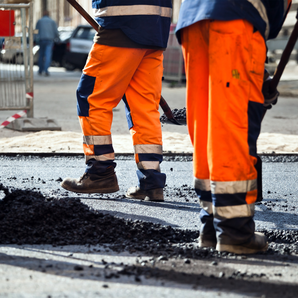 Is healing a system? Can you exercise it? Sure, I say! I think we often understand healing, vaguely, as a process: there’s an injury, then thru some processes it’s fixed, and there’s no injury anymore. Broadly speaking, this is a perfectly OK understanding. But have you ever had a road crew fixing pot holes on a road you travel frequently, and they just didn’t quite finish up? Sure, the pothole is filled, but now it’s a bump on the road, there’s loose gravel or something all over, water pools when it rains… but then you turn into a fancy neighborhood or cross into another township, and the roads are purrrrrfect. Smooth, even blacktop; crisp, bright lines; wide, even shoulders bicycles can fit on. It’s like a dream. So what’s the difference between the town that has bumpy pot hole repairs and the one with perfect roads? Resources. The time, budget, raw materials, and skilled workers to get the job done right, completely, and in good time. I’m not here to bash local politics. Organizing things like road construction is well beyond my purview. But I can help you influence YOUR local resources, and encourage you to look to yourself- what resources are you providing to your own healing construction and repair crews? Yes, healing is a process, and it’s one that the body often can’t do a complete job of because it’s so busy putting out fires (literally and metaphorically) all over. So providing enough resources to the systems that establish and direct the healing processes can help them do a better job, as can reducing the overall demand on the systems in the first place. You Need Rest A huge factor is successful fitness training (aka body construction) is understanding and appreciating the sheer value of rest. Things need to rest, settle down, and slot into place in order for them to become what they are supposed to be. For example:
This includes you, too. You need DEEP rest- darken your room, remove your electronics, and give yourself as much sleep as you can. Honestly, so what if you can go to bed by 8:30, or even earlier? The hours before midnight seem to count more than the total hours anyway, and who's actually judging you for taking care of yourself? You need PHYSICAL rest- have a lazy morning. Put your feet up and read of an afternoon. Take cat naps. Indulge in a float tank or a salt room session. Get a massage. Watch a movie. Take a bath. Get in a swimming pool. You need MENTAL rest- time when you don't think or plan or push. Schedule a day just to do the little tasks, like deleting emails, filing papers, organizing your books, sorting out of season clothes to donate or discard. Take a walk with an audio book or just listen to the birds. Garden. Journal for 15 minutes, no spelling or grammar or even spaces between the words, just whatever comes out of your head, then discard the paper. Wipe the light switches, the trim work, the door handles. Your NERVOUS SYSTEM needs rest- put on some piano music, or whale sounds, or a rainy day youtube video. Get out a coloring book. Make something, however inexpertly. Stretch. Do yoga or tai chi. Chat with friends over ice cream or a beer. SHUT THE NEWS OFF. You can’t fix a pothole without blocking the road. You can’t heal without interrupting our ceaseless pressure to GoGoGoGoGo. You Need Resources RESUPPLY YOUR CONSTRUCTION CREWS When there’s physical injury, you need physical molecules to repair it- proteins, fats, fluid, etc. So eat clean proteins, and collagen- we simply don’t make enough to overcome the damage this life does to us. Eat healthy fats. Drink more water. Get nutrient dense foods so your micronutrients are lavishly supplied as well- Iron, Magnesium, Calcium, Sulfur, all the vitamins, all of it. Drink more water! Your body needs water to deliver nutrients and wash away waste from your cells. Your body needs water to create the waste you eliminate- solid, liquid, and gas. Your body needs water to keep your membranes healthy- and your WHOLE digestive system is a mucous membrane. Eat good fats! Every single cell in your body, your entire nervous system including your whole brain, and all your mucous membranes are made of fats. They're not the enemy, they're essential. My rule of thumb is if they're from something I recognize I eat 'em- like olives, avocados, coconuts, eggs, and yes, animals. Here's a common question: Should you take supplements? A concrete answer to this isn't within my wheelhouse. But I will tell you, hardly anyone is harmed by a quality multivitamin, Magnesium, Omega 3s, and Vitamin D. You Need Waste Management IMPROVE THE DELIVERY AND ELIMINATION ROUTES Have you ever considered just exactly HOW your body actually accomplishes healing? It takes two major, underappreciated systems: the Immune system and the Lymph system. Think of the Immune system as Mission Control, and the Lymph as both an Instant Delivery and Waste Management system. Read more about your waste and repair crews next week in Part 2 |
Fun Fact: I'm an herbalist and a movement coach. Not a doctor, or a pharmacist, and not pretending to be one on TV.
This is a public space, so my writing reflects my experiences and I try to stay general enough so it might relate to you. This does not constitute medical advice, and I encourage you to discuss concerns with your doctor. Remember, however, that the final say in your wellness decisions are always yours- you have the power to choose, you are the boss of you. And, some of my posts may contain affiliate links. If you make a purchase through them I'll earn a few cents. Thank you for supporting my work. This website is provided for educational and informational purposes only and is not medical, mental health or healthcare advice. The information presented here is not intended to diagnose, treat, heal, cure or prevent any illness, medical condition or mental or emotional condition. Working with us is not a guarantee of any results. Paula Billig owns all copyrights to the materials presented here unless otherwise noted. Categories
All
Archives
July 2021
|
|
info @paulaswellness.com |
DisclaimerThis website is provided for educational and informational purposes only and is not medical, mental health or healthcare advice. The information presented here is not intended to diagnose, treat, heal, cure or prevent any illness, medical condition or mental or emotional condition. Working with us is not a guarantee of any results. Paula Billig owns all copyrights to the materials presented here unless otherwise noted. |






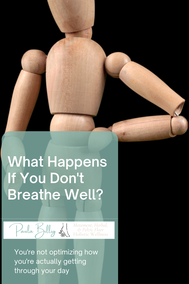














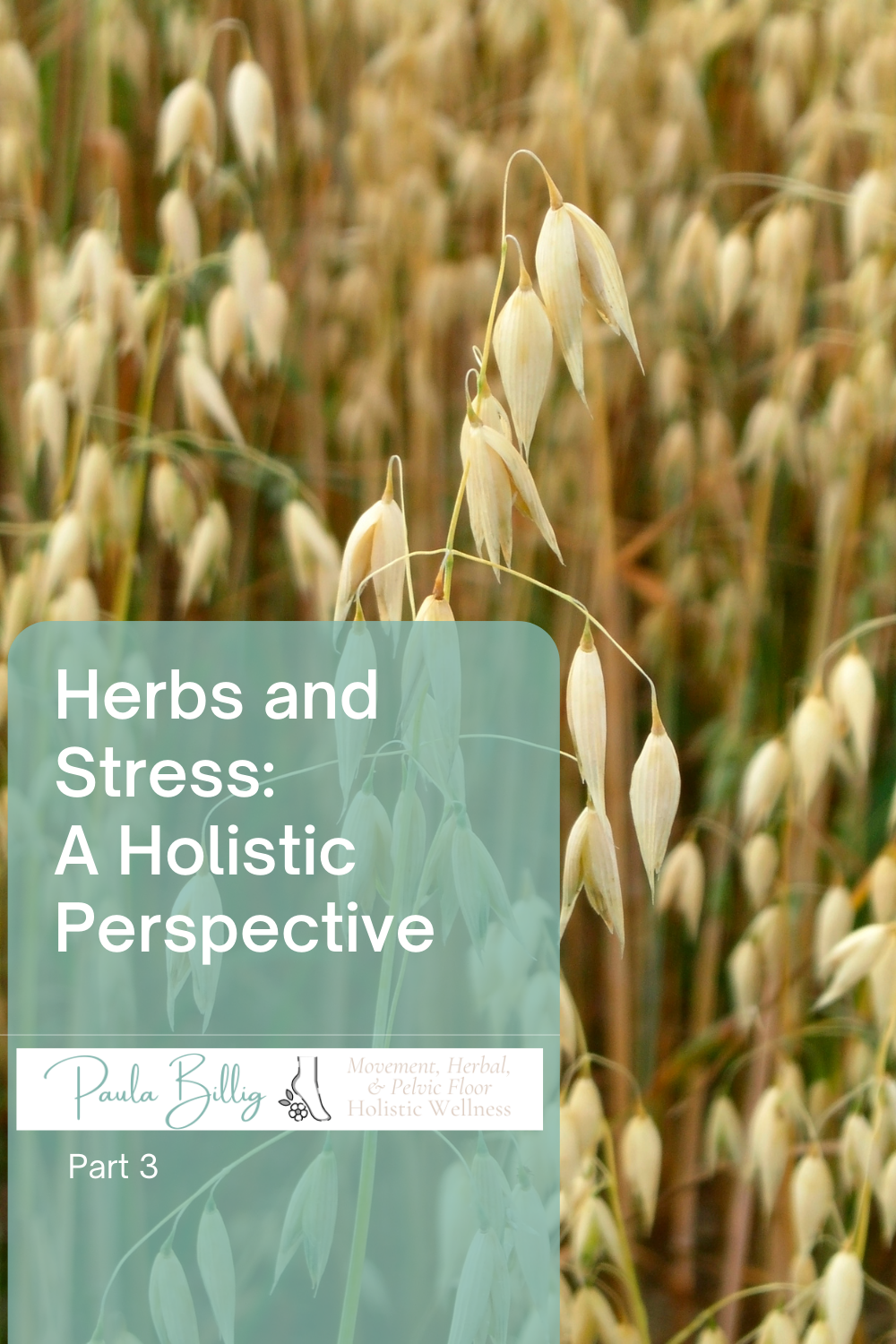












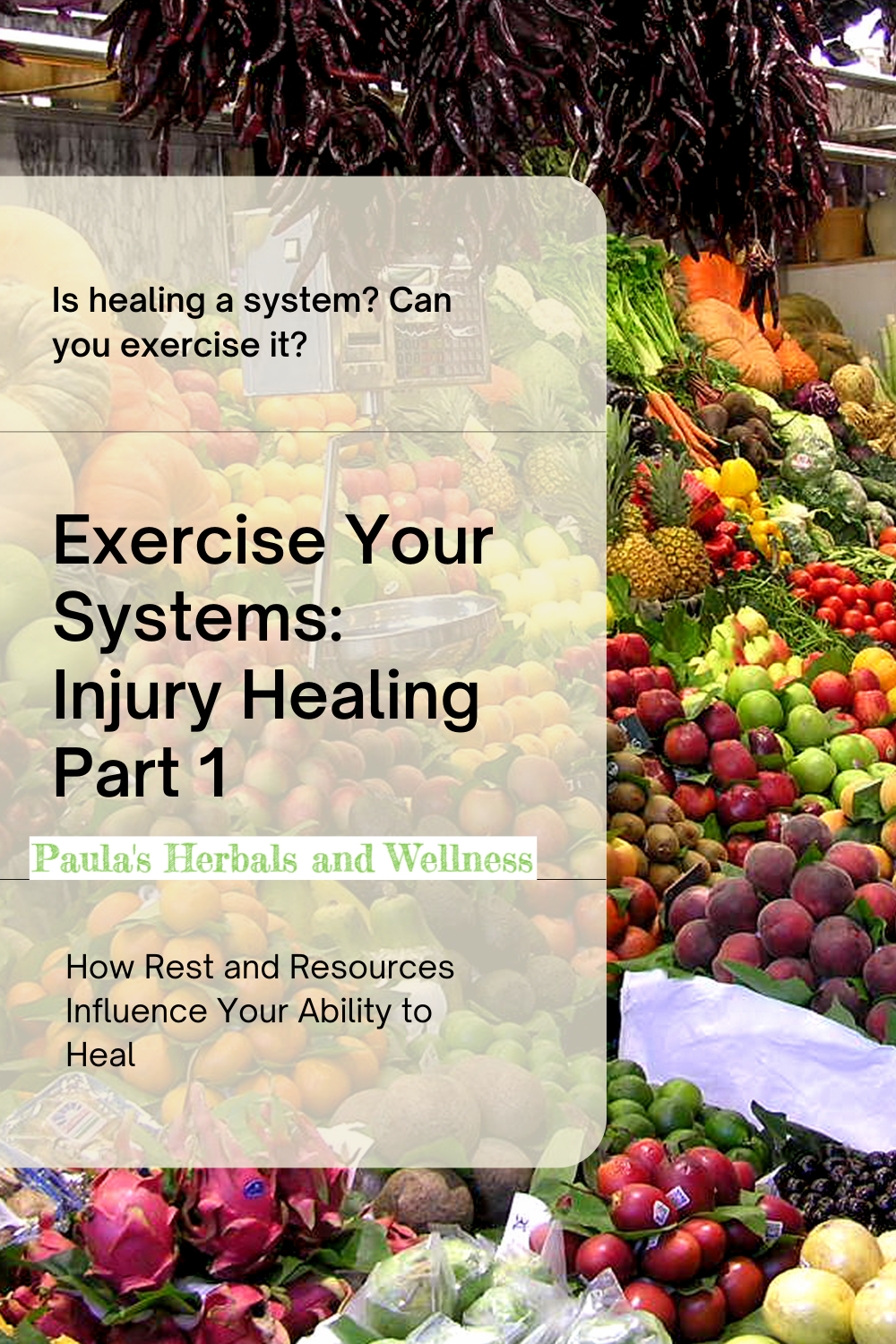

 RSS Feed
RSS Feed

